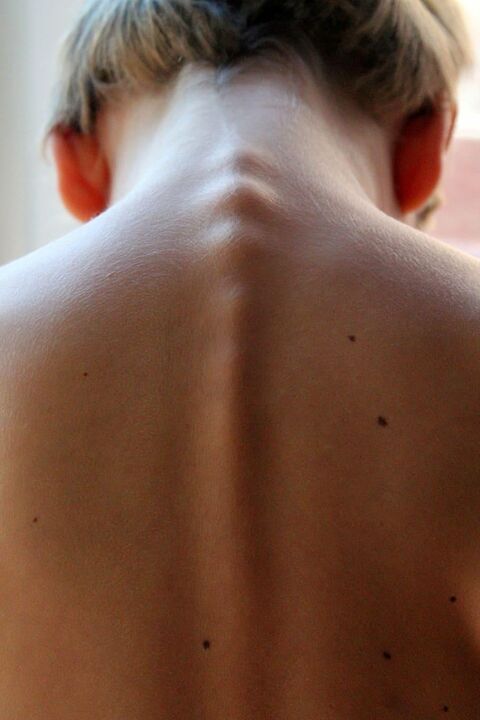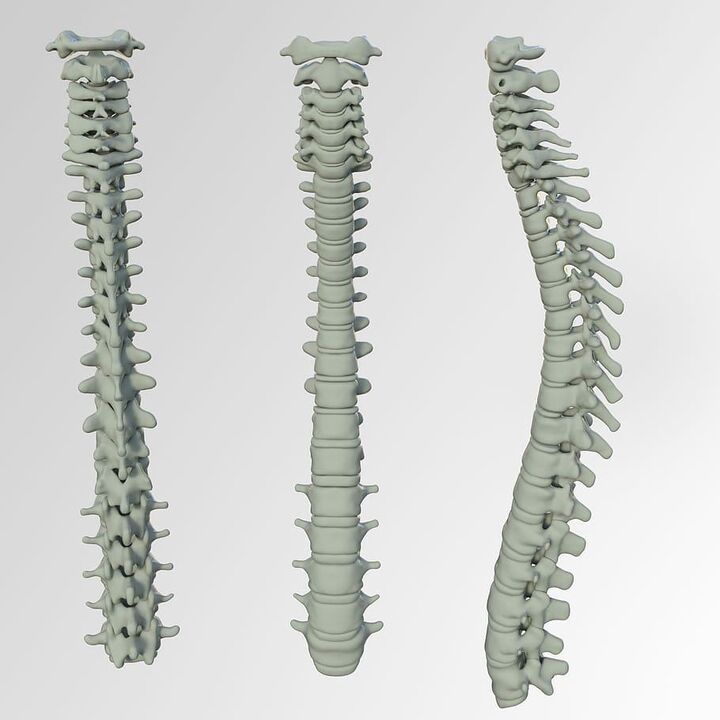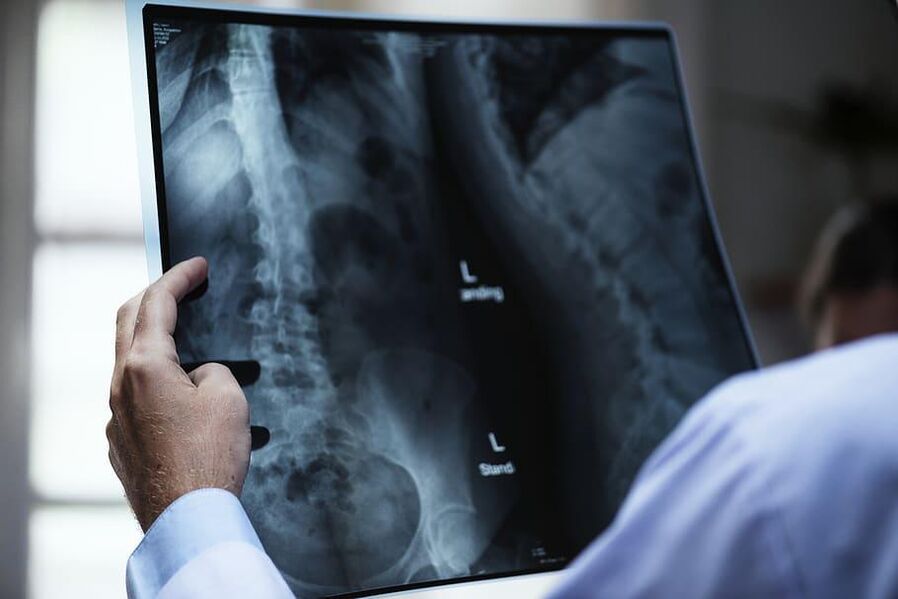Cervical osteochondrosis is a very common disease in the modern world. Many people have it early, but don't suspect. The widespread osteochondrosis of the neck is due to the fact that people start to sit more and move less. Let's take a closer look at the causes of the development of the disease and this unpleasant method.

What is cervical osteochondrosis?
Therefore, cervical osteochondrosis is a degenerative-dystrophic disease of the cartilage of the musculoskeletal system. The disease is characterized by pathological changes in the cartilage structure, leading to violations of the anatomical structure of the spinal elements, interfering with the mobility of the frame and causing painful sensations. The disease can affect any part of the spine, but due to excessive mobility and small vertebral size, the cervical segment most often suffers from this pathology. The neck suffers an impressive load every day. The head turn and even the facts of the retention forces the vertebrae and intervertebral discs to work intensively. From the normal exposure from the outside, the intervertebral disc is thinner, the microcess appears on them. Over time, their height decreases, they begin to change in a smaller way and stop fulfilling their main function - depreciation of vertebrae.
The cause of cervical osteochondrosis
The cause of the development of the disease, first of all, is due to age -related aging and the destruction of bone and cartilage. The following causes of osteochondrosis can also be called:

- a violation of posture
- reduction of motor activity due to an inactive lifestyle
- Excessive weight, which is the result of metabolic disorders, has a load on the intervertebral disc
- Descendant
- Long physical activity
- spinal abnormalities
Symptoms of cervical osteochondrosis
Cervical osteochondrosis has specific manifestations. This is due to the features of the cervical spinal anatomy. Often, patients complain of pain in various intensity, increasing over the long term in one position. Other symptoms are often added to pain:
- Disadvantages in the upper part of the limbs
- numbness and a tingling hand
- stiffness while moving the head
- dizziness (indicating that damaged elements affect arteries)
- Numb lips
- A coma sensation in the throat
Sign of cervical osteochondrosis
In the field of medicine, it is common to separate the signs of osteochondrosis based on the manifestation of symptoms combined into a syndrome. 4 This syndrome is distinguished:
- Koreshka - shows a pinching nerve beam, which causes severe pain, as well as a set of autonomic symptoms (dizziness, weakness, lumps in the throat);
- Vertebral artery - damaged elements surrounding the large vertebral artery, which is the cause of severe headaches, dizziness;
- Vertebral - causing pain in the neck itself;
- Cardial - masked under the attack of angina pectoris, which is characterized by severe chest pain, similar to a heart attack.
Stage of development of cervical osteochondrosis
1 degree osteochondrosis

It is characterized by the onset of the destruction of the intervertebral disc. Cracks in the fibrous ring, the strength and elasticity of the disc is formed, the height decreases, as the nerve roots are squeezed. Character pain appears. Sometimes at level 1 (premature) such pain may be absent, and osteochondrosis continues with moderate discomfort in the neck.
2 degrees osteochondrosis
If the 1st grade osteochondrosis is not treated or ineffective treatment, then the 2nd degree osteochondrosis occurs - chronic. The pain becomes constant, the destruction and seal of the intervertebral disc continues and leads to small dislocations of the cervical vertebra. With cervical osteochondrosis, the fallen head syndrome can develop at this stage. The syndrome is characterized by severe pain, and one has to support his head in a regular condition to reduce pain.
3 degrees osteochondrosis
The fibrous rings are almost destroyed, leading to complications of osteochondrosis - an intervertebral disc or intervertebral hernia. In 3 stages of osteochondrosis, the intensity of pain can be reduced, as the cartilaginus tissue affected in the disc between the vertebra is no longer there, which means no source of pain, however, pinching the nerve roots, so the pain does not completely leave.
Diagnosis of cervical osteochondrosis
In the event of suspicion of cervical osteochondrosis, it is necessary to contact the medical institution on time. Comprehensive diagnosis will help identify the disease, evaluate his degree and understand the cause of pathological development. Early diagnosis is made based on examination and palpation - with osteochondrosis, cervical muscle tension is observed, in some cases, spinal deformation is significant. After the objective diagnosis, the doctor sends the patient to an additional study. The following diagnostic methods are used to confirm the diagnosis:
Early diagnosis is made based on examination and palpation - with osteochondrosis, cervical muscle tension is observed, in some cases, spinal deformation is significant. After the objective diagnosis, the doctor sends the patient to an additional study. The following diagnostic methods are used to confirm the diagnosis:
- Magnetic resonance tomography
- Radiography (lateral and straight)
- Computed tomography
To determine the cause of pathological development, ultrasound examination of nearby organs, heart ECG, duplex scanning of blood vessels, blood tests and urine can be supplemented.
Treatment of cervical osteochondrosis
Treatment of osteochondrosis requires an integrated approach. For the removal of temporary pain, painkillers are used, but the basis of therapy is physical therapy and massage. Massage helps relieve muscle hypertension, increases pain. This procedure also restores normal blood circulation, increasing the supply of damaged tissue. Based on the results of the massage course, the voltage is removed from the cervical region, the load on the spine is redistributed. Drug treatment. Medicines relieve pain and inflammation, restore blood circulation and eliminate cramps in the neck muscles. For this, the following groups of drugs can be used: glucocorticosteroids, analgesics, muscle relaxants, and other physiotherapy treatment. In addition to taking medication to relax near the cervical muscles, eliminating cramps and normalizing blood circulation will help with physiotherapeutic procedures: acupuncture, laser effects, magnetotherapy, UHF therapy, phonophoresis, and more. Therapeutic gymnastics. Special physical exercises will help patients strengthen muscle frames, adjust posture and increase blood supply to the upper part of the spinal column. In the case of osteochondrosis stages of the cervical spine or with the effectiveness of inadequate conservative methods, surgery is required.
Therapeutic gymnastics. Special physical exercises will help patients strengthen muscle frames, adjust posture and increase blood supply to the upper part of the spinal column. In the case of osteochondrosis stages of the cervical spine or with the effectiveness of inadequate conservative methods, surgery is required.
Prevention of cervical osteochondrosis
To prevent the development of cervical osteochondrosis, it is recommended: when sitting, be sure to take five -hourly rest, avoid the load on the neck; Do not make head movements, monitor posture; Avoid hypothermia; engaged in physical education, swimming; eat properly; The dream should be on a dense mattress and on a low pillow, the neck angle should not be more than 15 degrees; After 25 years, avoid the surprise load on the spine (jump, walk). However, when the symptoms of the disease appear - be sure to visit a doctor. Don't be alone!













































